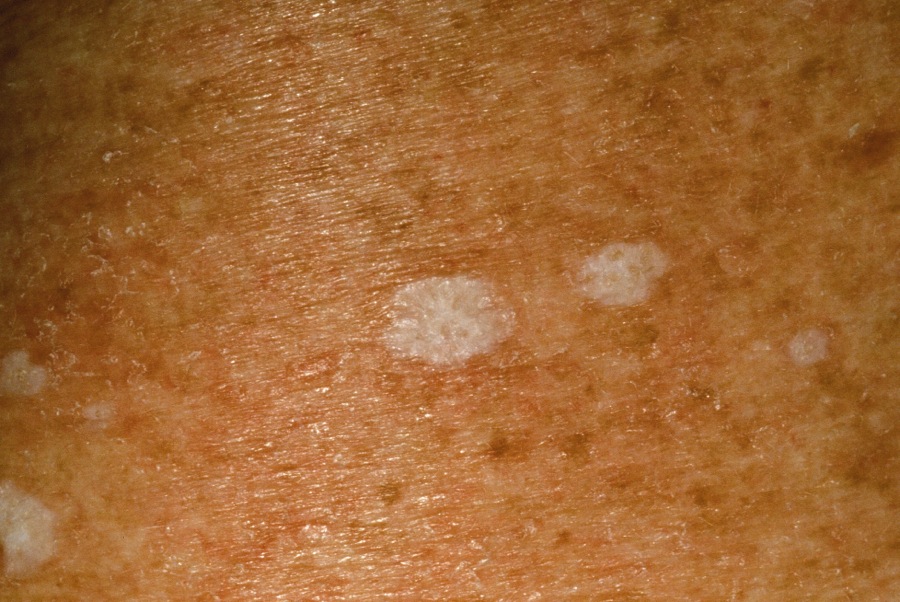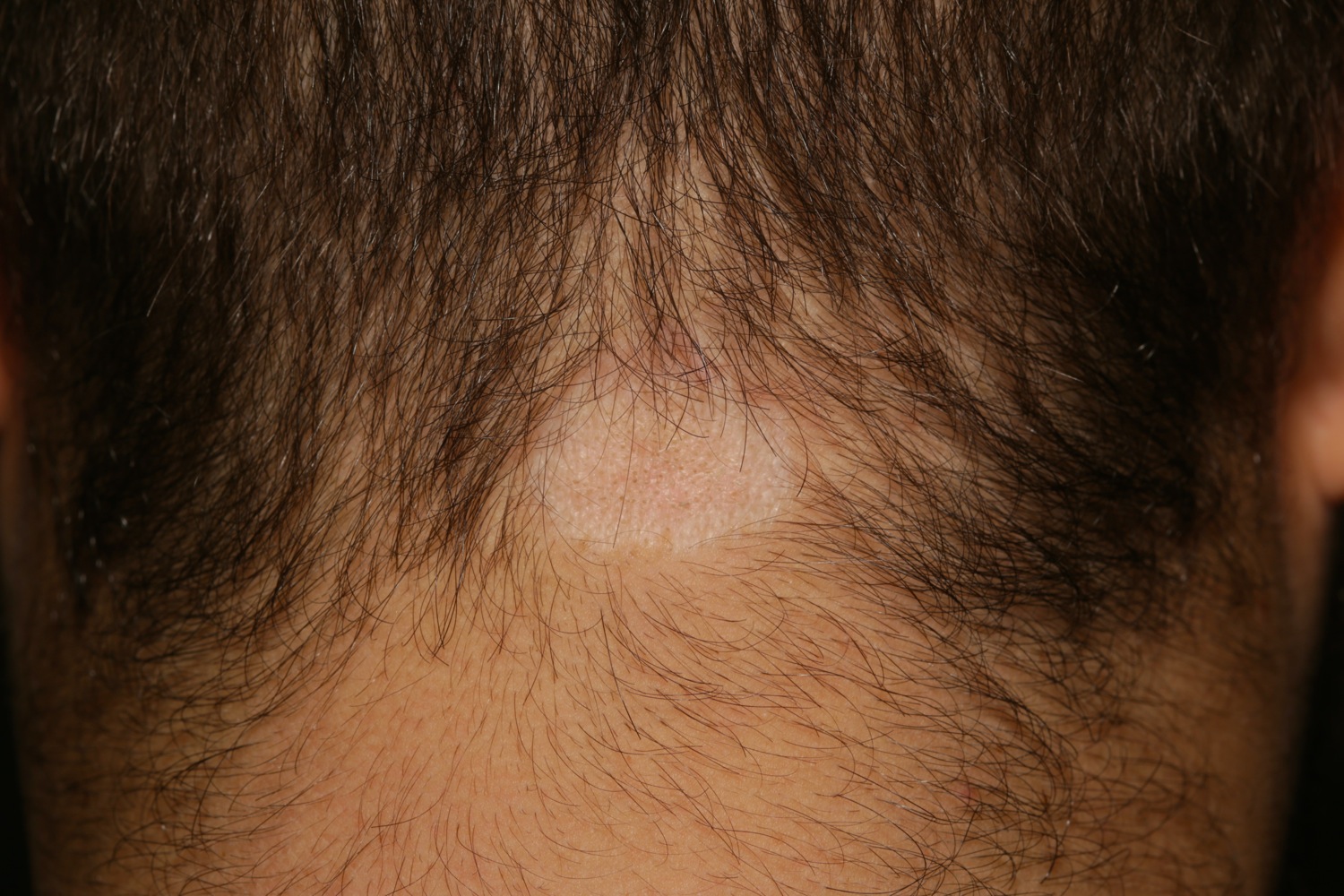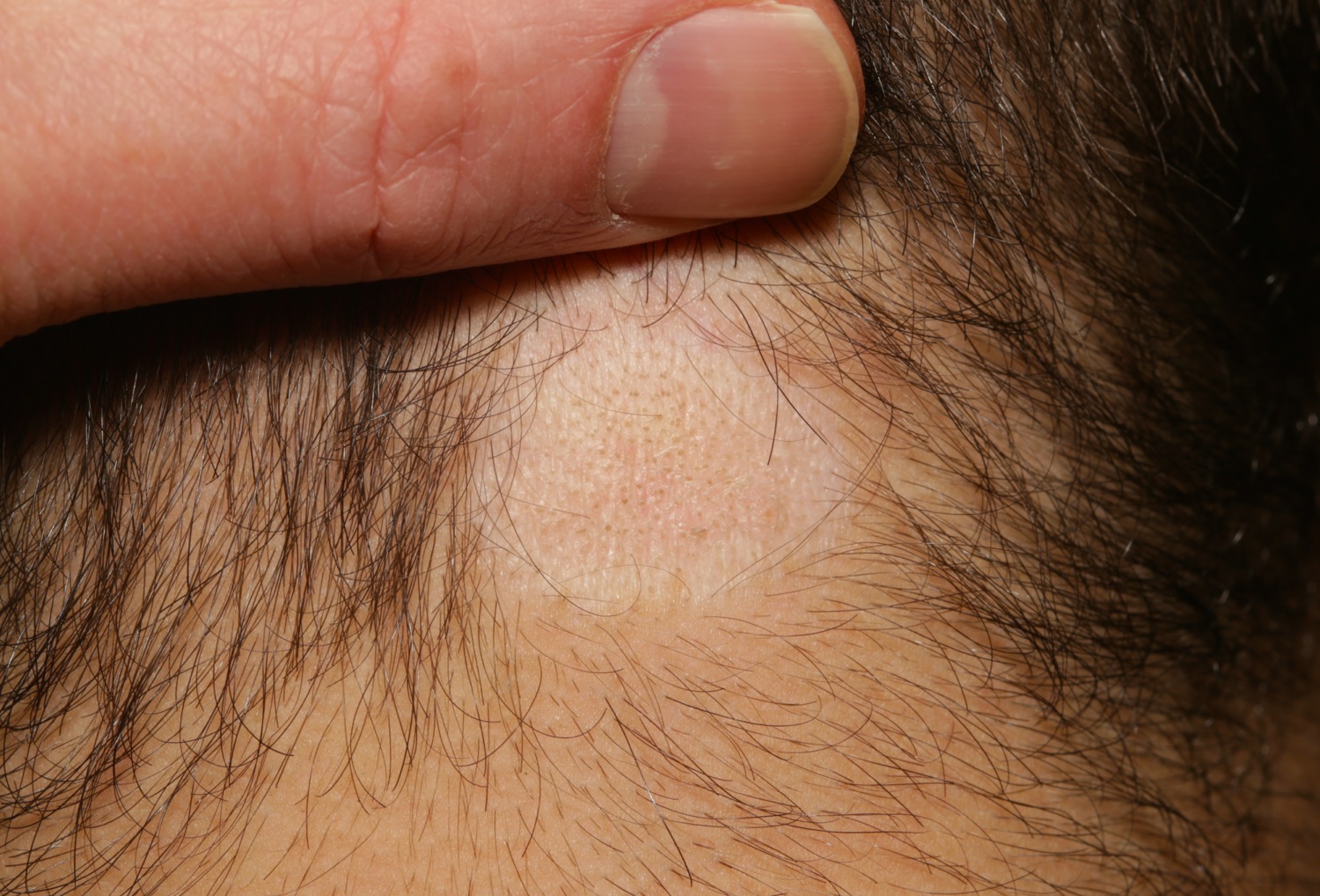
(Extragenital) Lichen Sclerosis on the back. For more photos that are NSFW, see here.
LICHEN SCLEROSUS (ET ATROPHICUS)
Lichen sclerosus (LS) is an inflammatory dermatosis producing white areas on the skin and genitalia. It commonly occurs on the vulva in females of all ages.
- White spots on the vulva which often are itchy.
- Most common cause of chronic vulvar disease.
- 15% are children.
- 15% have extra genital disease.
- 3-5% develop squamous cell carcinoma--but this can be greatly reduced with proper treatment.
- May be associated with morphea on the body.
- Balanitis xerotica obliterans is an analogous condition on the penis.
Etiology
- LS may be an autoimmune condition but the exact etiology is unknown.
- Genital LS may related to exposure of susceptible epithelium to urine.
Clinical Features
- White papules and plaques. May have hourglass or figure of eight pattern.
- Itch occurs in 90% of cases, but condition can be asymptomatic.
- The surface often has a cellophane-like sheen.
- Purpura is not uncommon.
- LS can occur anywhere, even in the mouth or vagina.
- Dysuria and pain are common.
- Chronic cases often result in scarring, atrophy, and loss of the normal anatomy.
- Patients may have introital narrowing with dyspareunia and sexual dysfunction.
- LS may coexist in the vulva with other conditions, e.g., vitiligo, psoriasis, or contact dermatitis.
White atrophic areas are seen in the vulva in both women and girls. Purpura is not uncommon. In adults the purpura may just be thought of as a bruise and the clinician may not notice the LS. In children, the purpura may be confused with abuse. LS may occur extragenitally and occasionally may be widespread. Any woman with LS of the skin should have the vulva and perianal area examined as well. Sometimes, there is an overlap with morphea.
Vitiligoid lichen sclerosus is defined as having the clinical presentation of vitiligo, but the histologic appearance of lichen sclerosis. It is predominantly seen in darker-skinned girls. A typical finding is that patients don't have depigmented patches elsewhere. In one series of cases, all patients were girls between the ages of 5-9. Topical steroid may improve symptoms, but often don't restore the pigmentation.
Lesions on the penis are called balanitis xerotica obliterans. Extragenital lesions in men may rarely occur. LS may occur around urostomies, again suggesting that urine on the skin plays an etiological role.
Children
- 15% of cases are pediatric and may occur in the very young.
- Children may present with painful defecation from perianal disease.
- Purpura of LS may be confused with abuse.
Diagnosis
- The diagnosis is usually obvious clinically, but some advocate biopsying adults to confirm and validate lifelong treatment.
- Cases in children need not be biopsied.
Squamous Cell Carcinoma in Lichen Sclerosus
- 3-5% of patients with vulvar LS develop squamous cell carcinoma (SCC).
- 60% of patients with vulvar SCC have vulvar LS.
- In cases of chronic LS, biopsy any thickened areas or growths.
- Vulvar melanoma in LS is extremely rare, but has been reported in both children and adults.

LS of the inner wrists.


LS of the nape.
For more photos of lichen sclerosus that are graphic and NSFW, see here.
RegionalDerm
Homepage | Who is Dr. White? | Privacy Policy | FAQs | Use of Images | Contact Dr. White
It is not the intention of RegionalDerm.com to provide specific medical advice, diagnosis or treatment. RegionalDerm.com only intends to provide users with information regarding various medical conditions for educational purposes and will not provide specific medical advice. Information on RegionalDerm.com is not intended as a substitute for seeking medical treatment and you should always seek the advice of a qualified healthcare provider for diagnosis and for answers to your individual questions. Information contained on RegionalDerm.com should never cause you to disregard professional medical advice or delay seeking treatment. If you live in the United States and believe you are having a medical emergency call 911 immediately.

